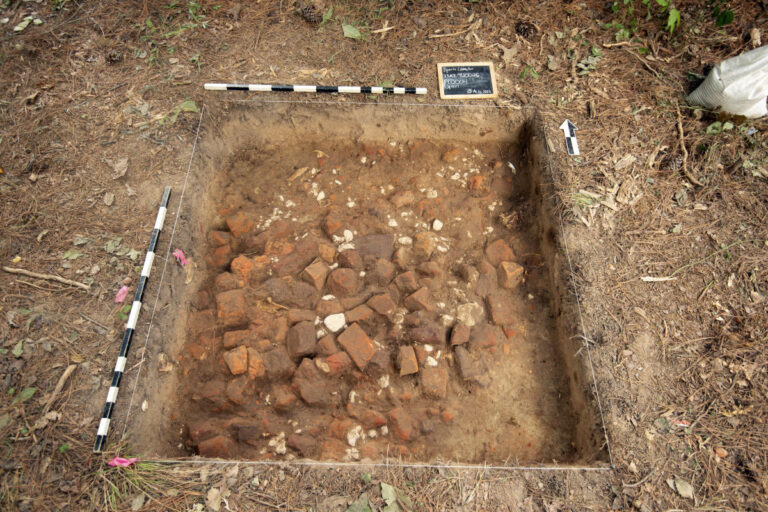WILLIAMSBURG, Va. (AP) — Archaeologists in Virginia have discovered what are believed to be the remains of a Revolutionary War military barracks, including chimney bricks and musket balls marked with soldiers’ teeth.
The site is on the property of Colonial Williamsburg, a living history museum that tells the story of the 18th-century capital of the British colony of Virginia.
Maps and documents from the period refer to a barracks built between 1776 and 1777 for the Continental Army as it fought the British, the museum said in a statement this week. The structure was designed to accommodate up to 2,000 soldiers and 100 horses.
The American Revolution began in 1775. The barracks are believed to have been destroyed in 1781 by troops of the army of British General Lord Charles Cornwallis. His forces were on their way to the Crucial Battle of Yorktown, where the British suffered heavy losses and surrendered. The war officially ended in 1783.
Archaeological evidence of Continental barracks in Virginia is rare, according to Colonial Williamsburg. This site is particularly valuable because it only served as a barracks. In addition, a significant part of the territory has remained largely intact.
The site was discovered during archaeological excavations necessary before the construction of a regional sports complex project. Its planned footprint has since been modified to preserve the barracks site of approximately 3 to 4 acres (1.2 to 1.6 hectares).
A first excavation last summer revealed the bases of chimneys and unearthed a military buckle and lead shot for muskets. The soldiers chewed the bullets because of their sweet taste.
Only a small percentage of the site has been excavated. The museum tells Williamsburg’s colonial history through interpreters and more than 400 restored or reconstructed buildings. He plans to use the site to tell the story of Williamsburg’s military involvement in the American Revolution and the daily lives of soldiers.


